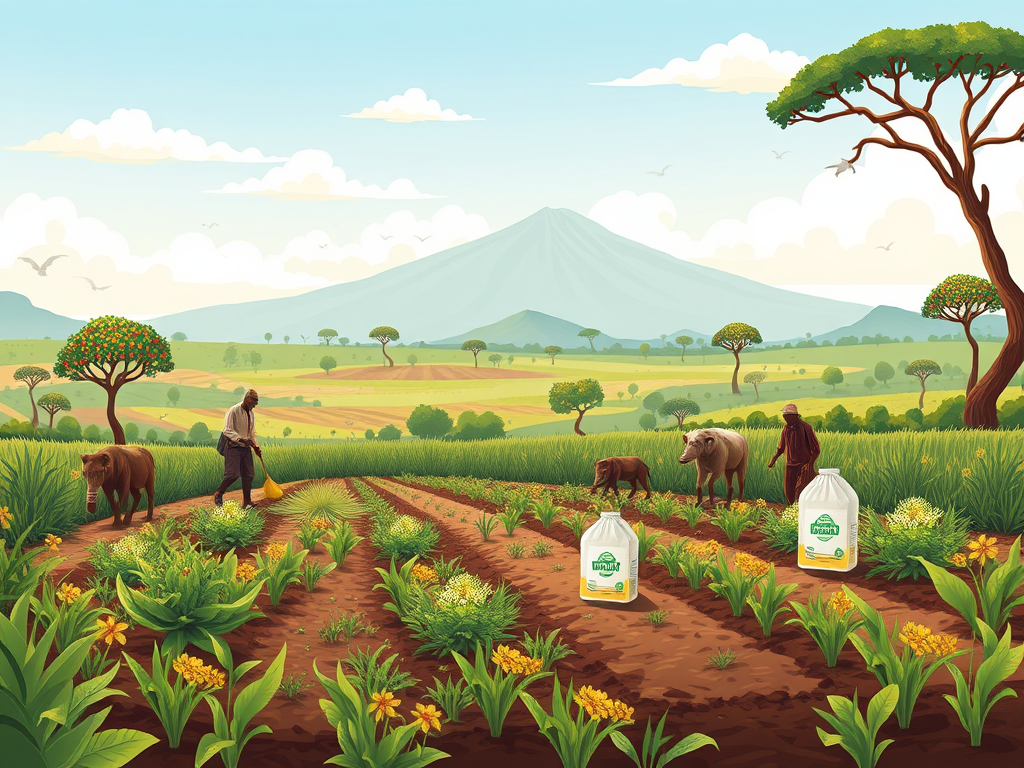Why Kenya Is Not Manufacturing Fertiliser: An Expanded Analysis
Kenya’s agricultural sector, vital to its economy, struggles with fertiliser production due to a complex interplay of factors. Here’s an enhanced exploration of the challenges:
- Dependence on Imports and Infrastructure Gaps
Kenya imports over 70% of its fertilisers, primarily due to inadequate infrastructure for local production. Key raw materials like phosphate, potash, and natural gas are scarce or underutilised, necessitating imports even for potential domestic manufacturing. Additionally, energy-intensive production processes are hindered by Kenya’s high electricity costs and unreliable supply, making local plants economically unviable compared to global competitors like Russia or Saudi Arabia. Foreign exchange pressures further strain the economy, as imports require hard currency reserves. - Economic Policies and Market Distortions
Government subsidies, aimed at easing farmers’ costs, disproportionately favour imported fertilisers, undercutting local producers. These short-term fixes neglect long-term investments in domestic manufacturing. Policies lack incentives such as tax breaks or public-private partnerships to attract investors. Moreover, Kenya’s smaller market size challenges economies of scale, deterring large-scale production facilities. - Soil Health and Shifting Agricultural Practices
Prolonged use of synthetic fertilisers has acidified 63% of arable land, reducing yields and prompting a shift toward organic practices. This transition, while environmentally beneficial, complicates demand for chemical fertilisers. Farmers increasingly seek alternatives like lime to neutralise soil acidity, which are not prioritised in current production strategies. Initiatives promoting composting and biofertilizers lack robust government support, further fragmenting the market. - Colonial Legacy and Knowledge Disconnect
Colonial-era policies prioritised cash crops and synthetic inputs, marginalising indigenous practices like intercropping and manure use. Post-independence policies perpetuated this dependency, framing African soils as “infertile” to justify imports. Modern agricultural extension services continue to emphasise chemical fertilisers, sidelining traditional knowledge that could enhance sustainable local production. - Scandals and Eroded Trust
Recent fake fertiliser scandals have devastated farmer confidence, particularly among smallholders who cannot afford crop failures. Substandard products exacerbate soil degradation and yield losses, creating a vicious cycle of distrust in both government programs and private suppliers. This environment stifles potential investment in local manufacturing, as farmers hesitate to adopt new products. - Global Market Vulnerability
Kenya’s import reliance exposes it to global volatility, such as price surges during the Russia-Ukraine conflict. While local production could mitigate such risks, initial investment is often deterred by the same crises, trapping the country in a cycle of dependency. - Technical and Regulatory Barriers
Limited R&D investment hinders the development of fertilisers tailored to Kenya’s diverse agro-ecological zones. Additionally, environmental regulations and community opposition to polluting industries delay plant approvals, despite potential sustainable practices like green ammonia production. - Financial and Skill Constraints
High capital costs and limited access to credit deter local entrepreneurs. A lack of technical expertise necessitates expensive foreign labour, further inflating costs. Without targeted training programs or international partnerships, this skills gap persists.
Conclusion
Addressing Kenya’s fertiliser production deficit requires a holistic strategy: revising subsidies to support local manufacturers, investing in renewable energy for sustainable production, integrating traditional knowledge with modern agronomy, and cracking down on counterfeit products. Strengthening regional partnerships could enhance market stability, while R&D initiatives can develop context-specific solutions. Only through coordinated efforts can Kenya achieve fertiliser self-sufficiency and secure its agricultural future.
Learn More:
- Kenya’s Fertiliser Crisis (The Conversation)
- Soil Degradation in Africa (FAO)
- Global Fertiliser Trends (IFDC)
- SHA: Emergency Evacuation and International Referrals – Access to Critical Care
- SHA: Dental and Optical Benefits – Caring for Your Smile and Vision
- SHA: Maternity Coverage – Comprehensive Care for Growing Families
- SHA: Outpatient Benefits Decoded – Your Day-to-Day Medical Coverage
- SHA: Inside Your Inpatient Coverage – Hospital Care Benefits Explained
- SHA: Your Benefits Breakdown – What Every Teacher Gets Based on Job Group
- TSC Unveils Comprehensive Medical Cover for All Teachers Starting December 2025
- Tragedy Strikes KJSEA Marking Exercise as Examiner Dies at Machakos Girls High School
- Shadows of Empire: How the West Maintains Control in Africa
- Why Senator Okiya Omtatah Wants to Abolish the Bomas National Tallying Centre (And Why It Matters for 2027)
- What to Study Now for a Successful Career in Kenya’s Future (2026-2050)
- AUDIT SHOCK: Only 3,000 Schools Get Capitation Funds as Govt Cracks Down on “Ghost Students”
- TSC’s Promotion Blueprint: How Teachers Earn Their Next Grade
- TSC CAREER OPPORTUNITIES: Deputy Director & Assistant Director Positions
- TSC 24,000 TEACHER INTERN VACANCIES
- EGYAID Scholarship Program 2025-2026
- Oman Scholarship Program 2025-2026
- 2026 COMMONWEALTH PhD & MASTERS SCHOLARSHIPS












